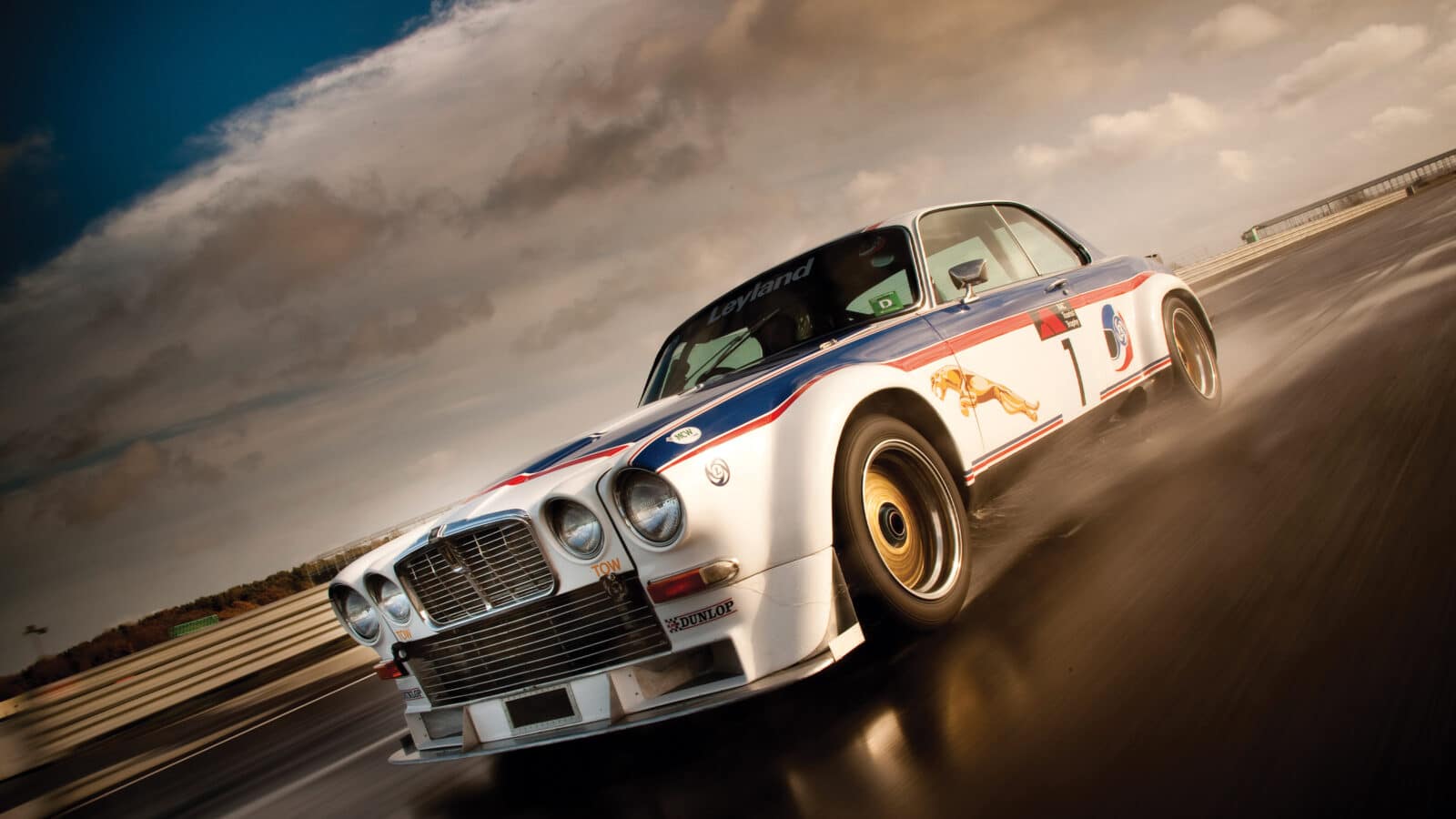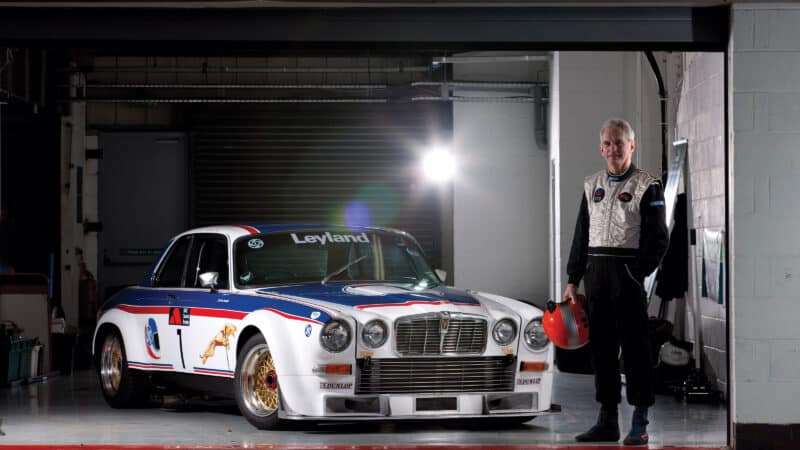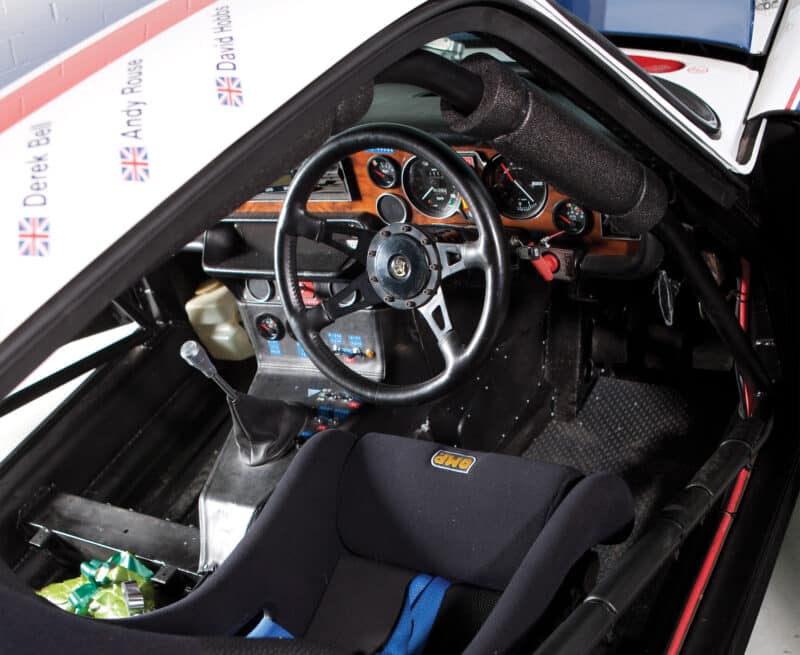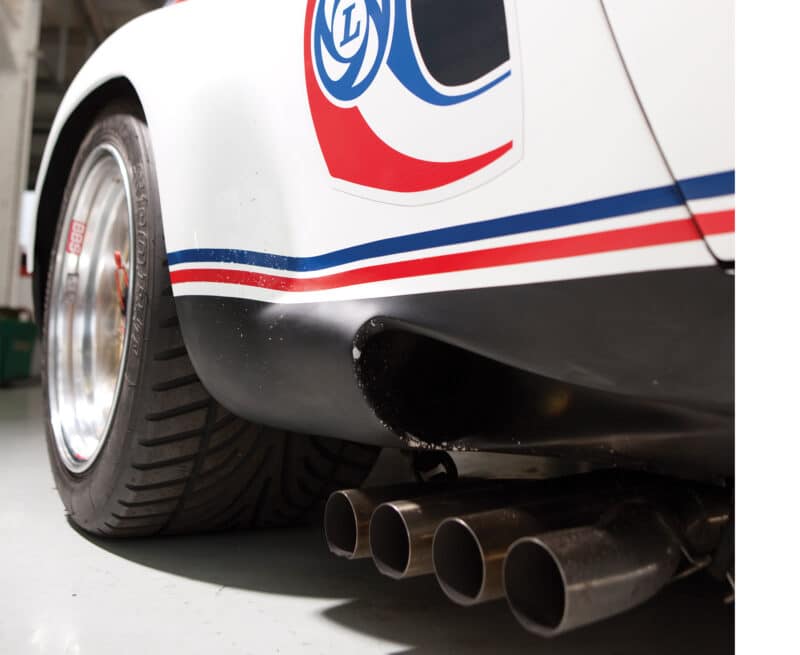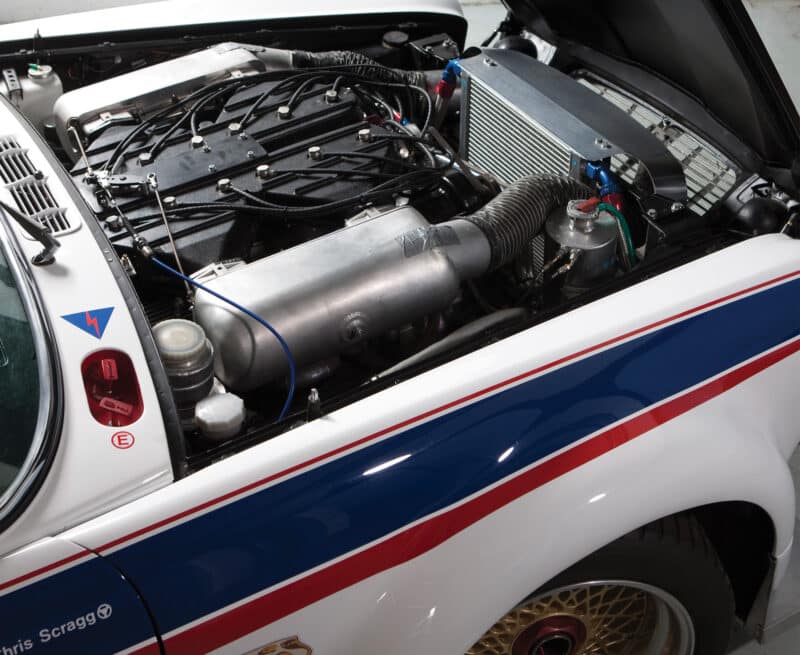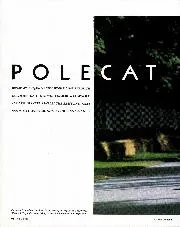“This was the car used for the launch, so I’ve had it done in the first paint scheme,” says Chris. “And it only ever ran on 16in rims, so we’ve kept those.” He and Mike point out the extraordinary originality of the machine: “Same windscreen, switches, instruments, headlights… Those are TT scrutineer labels. And we have the original seat Andy made for himself back at the shop.” In case there’s any doubt, I hear Andy say “I remember making those cooling ducts!”.
Chris wanted to race the XJ, so it’s not all ’76-spec: instead of the original 500, it has the dry-sumped 560bhp of the later V12, power steering, and twin silencers. That’s why when Chris gets in and presses ‘go’ there’s a loud rumble but not an ear-splitter. Yet before long we can hear that 12-cylinder wail above the Porsches and Westfields. Then it’s Rouse’s turn.
“It’s 33 years since I sat here,” he grins as he straps on the orange helmet, does up the straps and rolls smoothly away. When he returns after some damp but enjoyable laps he’s smiling. “That was like going back in time! But it’s nicer with the power steering. Driving the later cars on the big wheels was like being sentenced to hard labour. It was a difficult car compared to the BMW. The clutch was heavy, and the brakes. And it was so hot!”
And they were doing gruelling six-hour events in their day. Now the gleaming cat faces 10- or 20-lap historic races – where the galloping fuel thirst isn’t relevant – and Chris won first time out, in a Masters Touring 70s event against Batmobiles and Cologne Capris. Its old rivals, in fact. Heartening for those who watched with anguish every time the menacing Jags took to the track in that tortured year of 1977.
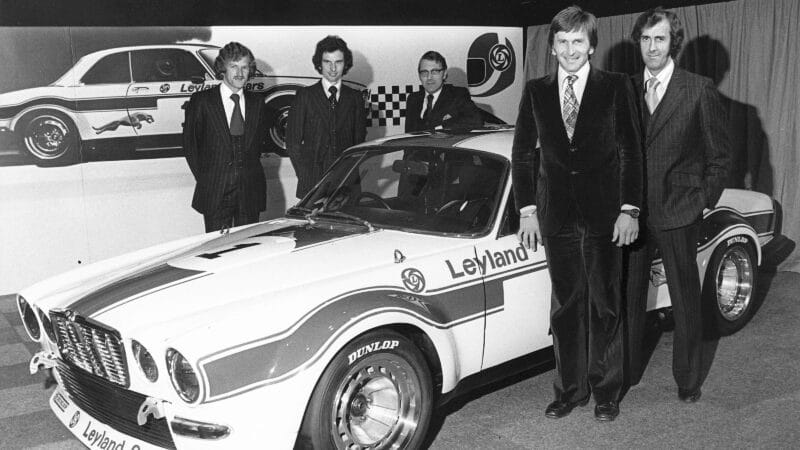
Left, background, Ralph Broad next to Andy Rouse; Front, foreground Derek Bell and David Hobbs
LAT
Broadspeed built two new cars from parts for this season, using parts developed on our feature car. A massive rollcage stiffened the ’shell, after acid-dipping to cut weight. “Ha!” wryly exclaims Roger King, one of the project engineers. “It took away too much in some places. We had to reinforce the sills; it only saved a matter of a few kilos. We went to 19in rims which allowed bigger brakes but they were always marginal. We tried electric cooling fans, and water cooling too.” In fact 001 still has this system on all four brakes – and it works!
King lists the mods for chassis 2 and 3: fabricated front suspension arms and subframe, new geometry, mag-alloy front uprights, twin diff oil coolers, adjustable rear lower arms. “But the rear was always the problem. The load on those driveshaft splines was huge.” Repeated breakages here meant you lost your upper link – and your wheel. That pitched both cars (driven now by Bell/Rouse and John Fitzpatrick/Tim Schenken) out of the Salzburgring round, after scoring pole and leading. Still, at least both ran: in the opener at Monza oil feed problems and a shortage of engines meant only one started, and soon went pop.
“It was desperate,” King recalls. “We were developing race by race. There just weren’t enough engines ready, and doing European rounds the cars were away for ages. We had to repair them in the paddock.”
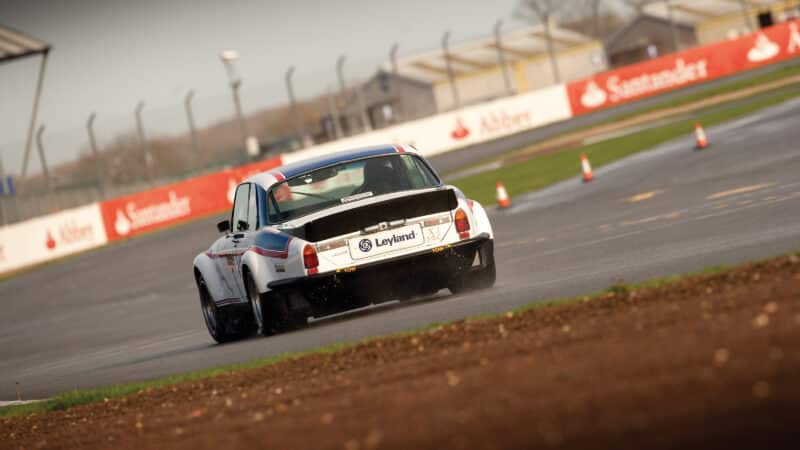
Vital rear spoiler added to Car 1 during development
Matt Howell
Yet the cars were quicker than ever. Huge Dunlop slicks, that vertical cliff of an airdam and the new tail spoiler all helped. “That spoiler was worth 2sec a lap,” says Rouse. But more speed meant further over-stressing the oil system, restricted by the regs to a wet sump (a decision that damaged the ETCC and would be reversed during the season). “There was just so much oil to move around. We tried everything – baffles, extra feeds,” says King. “We were always fighting the regs. We even hid an extra pump in the vee to move oil to the front.”
What’s amazing is what got through the regs. For a start, no road XJC ever had a manual gearbox. Or water-cooled brakes. “Of course it was illegal,” says an unabashed Broad today from his Portuguese home. “It had to be.”
The team couldn’t muster two working cars for the next two rounds. “We sent the cars to Mugello while I stayed behind testing parts,” says Rouse. “If they worked I was to fly out and fit them. They didn’t…”
But Brno looked good. Double front row again, the best BMW six seconds adrift. ‘Road’ cars winning on a road circuit – just what an increasingly alarmed BL was desperate for.
“They said ‘you’re producing too much power. Cut it down!’”
“The budget was running away,” says Davenport. “They were horrified by the tide of invoices, and the PR was mostly bad.”
Brno brought a result, the coupé’s first finish – 16th. After another blown V12 and another tyre deflation. Even the team had doubts. “Tim and I drove together,” says John Fitzpatrick, “and the second guy almost never got in. We used to joke they didn’t need us both – will you go this time or will I? But basically the car was terrific. Big power, handled well, easily capable of making up the extra fuel stop [a permanent worry due to the thirst and restricted tank size]. Ralph was a terrific engineer, but it was a Leyland thing. Jaguar didn’t want it to happen. There was no help.”
Davenport, the uncomfortable middleman, agrees: “Ralph needed more co-operation from Jaguar on special parts. He needed a forged rear upright above all, and never got it. In fact Bob Knight, senior engineer at Jaguar, disagreed with some of Ralph’s tactics and was actually building a rival car, an XJ-S, until the MD stamped on it.”
“Jaguar didn’t believe their flanges were failing,” says Rouse, “and insisted on testing them in-house.” The result wasn’t exactly positive, says Broad. “They said ‘you’re producing too much power. Cut it down! We don’t care if you only come second.’ I said ‘I’m only in this to win.’” It confirmed just how far relations had sunk between the fiery Midlander and an unrealistic client.
Yet by the time of the Nürburgring 6 Hours the drooping Union flags flew out straight once more. Front row again, and from the flag Fitz set a race lap record. “You wouldn’t think the ’Ring would suit a big car like that,” he muses, “but we had 15sec on them by lap two.” The lap he blew up on… But Bell and Rouse changed strategy: “We decided not to try to beat the BMWs,” Derek said later. “We just sat there, didn’t push, and came home second.” Surely the start of the good times…
No. They came home from Zandvoort with two broken cars. Which brings us to Silverstone and that momentous TT. Bell and Schenken are out, thanks to another spline failure, but Andy Rouse is sweating for victory, hurling the gorgeous, muscular Jaguar across the asphalt and edging closer to Tom Walkinshaw’s rear lights. A vast crowd is cheering him on. “It was a terrific race,” Andy says, smiling. “Dry, wet, dry – in the dry I led, in the wet he got past. But someone had blown up at Abbey and I just went sailing off on his oil.” The heavy machine bogged down in the gravel, and the life-saving injection which could have rescued it blew away in the chilly Silverstone winds.
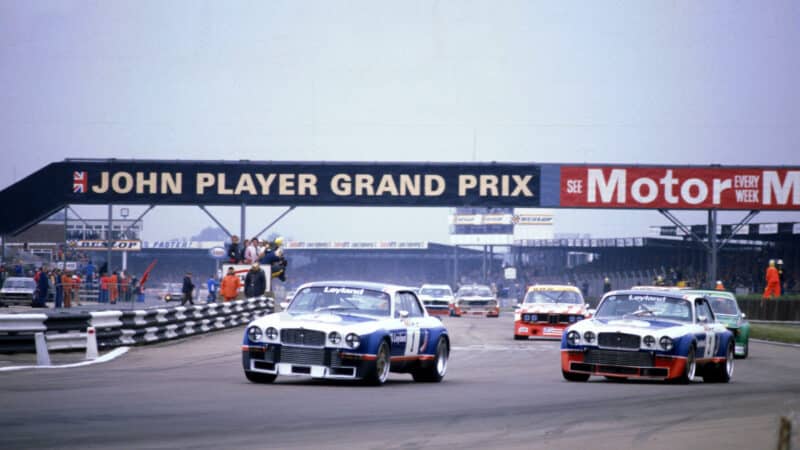
Broadspeed Jaguars in front at Silverstone in ’77… to begin with
David Phipps/Sutton Images
“Tom saw me spin, so he knew to avoid the oil next lap,” adds Rouse. It wasn’t the only gain. Later, TWR would benefit from much of Broadspeed’s work (plus the right car, sledgehammered into compliance) when the Walkinshaw XJ-S took the ETCC title.
There were three rounds to go. Both cars went to Zolder: pole position and the race lead again, one blown V12, one broken gearbox. Memos flew at British Leyland. Davenport says the cancellation release was already written, while Ralph Broad was fed up. “I got so pissed off. They were running around like chickens. They beat me to it. I’d written my letter telling them to stuff it when I got their telegram saying they couldn’t afford it any more. Never known such incompetence. In the Dolomite days we spent a day discussing whether I could use alloy wheels. After the Jag I went to Germany. They were a breath of fresh air.”
Was this really the verge of success? Yes, says Fitz. “They were always quick and they were getting reliable, especially with the dry sump [made legal in July ’77].” Rouse, though, feels the fuel handicap was always against them, that they couldn’t make up the extra stops over the frugal BMW. “And the tyres let us down too.”
A fourth car was on the way by now, lighter, with improved suspension, but the build was stopped. Rumours of Rouse building himself a road car are nonsense, he says, probably sparked by the John Steed lookalike car built for the Avengers TV series on a standard base. One of the ’77 XJCs lives in the Jaguar Heritage collection, one is in France, while car four was built up in recent years and appears at shows. But you can watch and hear chassis 1 in Masters events this year (and see it at RaceRetro) as Chris Scragg acts out Andy Rouse’s one-time hopes. At the pits, gazing at the car he’s just vacated cooling and ticking, Andy sighs: “Woodcote used to be just a dab on the brakes in this. Wonderful! Biggest disappointment of my life when they killed it.”
